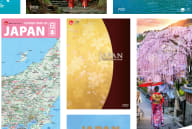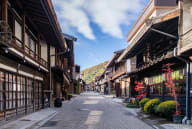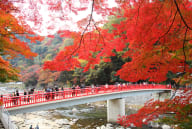
Saitama Taste the blend of city and countryside.
A Culinary Journey in Saitama
Saitama Prefecture, situated just north of Tokyo, is a vibrant region that seamlessly blends urban convenience with natural beauty and rich agricultural traditions. Known for its fertile plains and temperate climate, Saitama offers a bounty of fresh produce and culinary delights that reflect its unique cultural heritage.
One of Saitama's standout products is its high-quality green tea, particularly the Sayama variety, cultivated in the region's lush fields. The prefecture's tea is celebrated for its rich flavour and aroma, a testament to the area's ideal growing conditions and meticulous cultivation practices. Saitama is also renowned for its sweet potatoes which are enjoyed in a variety of traditional and modern dishes.
Saitama's local cuisine is a delightful tapestry of traditional and modern flavours, reflecting its rich cultural heritage and agricultural affluence. One standout dish is "Hiyajiru udon," a refreshing cold udon noodle soup perfect for hot summer days, featuring a savoury miso broth with seasonal vegetables. Another local favourite is "Fukaya Negi," a type of green onion known for its sweetness and tender texture, often grilled or used in various dishes to enhance their flavour. These culinary delights, along with the region's fresh produce and innovative food culture, make Saitama a must-visit destination for food enthusiasts.
Explore the culinary charms of Saitama, where each dish embodies the region's deep-rooted connection to the land and its innovative spirit.
Yakiton (Grilled pork skewers)

What it is (Ingredients)
Yakiton is a mouth-watering Japanese dish featuring skewered pork. The skewers are typically made from every part of the pig, including the belly, shoulders, and sometimes liver, heart, and intestines. They are seasoned simply with salt and pepper or cooked in a sauce made of soy sauce, mirin, sake, and sugar. In Saitama, Yakiton is often made with pork cheeks and temples, lightly seasoned with salt and pepper, and served with a slightly spicy miso sauce.
History/Origin
Yakiton is especially famous in Higashi-matsuyama City, Saitama, one of Japan's seven largest yakitori cities. Its origins date back to the creative use of all pig parts. Interestingly, in Saitama, yakitori is made with pork (Ton) instead of chicken (Tori), yet it retains the name "Yakitori."
Where You Can Eat
Yakiton is widely available in Saitama prefecture, where you can find it in local Izakaya (Japanese style dining bar,) food stalls, and dedicated Yakiton shops. These establishments craft the perfect skewers, often grilling them to order and serving them hot off the grill. You can also find Yakiton at festivals and outdoor markets, where the enticing aroma of grilling meat draws in crowds.
When to Eat
Yakiton is available any time of the year. It is especially popular during the warmer months when outdoor grilling is at its peak. It is an ideal dish for social gatherings, making it a popular choice for evening outings with friends and family.
Savour the smoky, succulent taste of Yakiton in Saitama—each skewer is a delicious bite of grilled perfection that’ll have you coming back for more!
Kawahaba udon : Wide noodles udon

What it is (Ingredients)
Kawahaba udon is a distinctive type of udon noodle known for its extraordinary width, originating from Konosu City, Saitama. These wide, flat noodles are made from a simple dough consisting of wheat flour, water, and salt. The dough is rolled out thinly and cut into broad, ribbon-like strips. Kawahaba udon is often served in a hot broth made from dashi (a Japanese soup stock), soy sauce, and mirin, and topped with ingredients such as green onions, tempura, or vegetables. The broad surface of the noodles allows them to absorb the rich, savoury flavours of the broth, creating a satisfying dish.
History/Origin
The history of Kawahaba udon is relatively short. In 2008, when the Arakawa River, which runs between Konosu City and Yoshimi Town (2537 meters), was certified as the widest river in Japan, wide udon noodles were created to mimic the river. (Kawahaba means river width in Japanese.) This udon gained nationwide fame in 2010 when it won second place at the 6th Saitama B-Class Local Gourmet Championship. Today, this unique style of udon has become a source of local pride.
Where You Can Eat
Kawahaba udon can be enjoyed at various restaurants and udon shops in Konosu City, Saitama. Konosu City offers local specialties associated with the Arakawa River, the widest river in Japan, including dried Kawahaba udon noodles, Kawahaba rice crackers, and Kawahaba cakes.
When to Eat
Kawahaba udon is a versatile dish that can be enjoyed year-round. It is particularly comforting during the colder months when the hot broth provides warmth and nourishment.
Experience the simple and delicious flavours of Kawahaba udon in Saitama, which has been famous for its handmade udon noodles since ancient times.































































